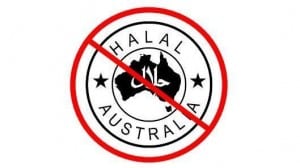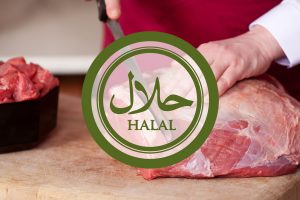BY JACKIE LINDEN – WATTPoultry.com
 Aimed at clarifying the situation, publication of a new report appears to have fueled controversy and confusion among Australian Muslims over the acceptability of locally produced chicken.
Aimed at clarifying the situation, publication of a new report appears to have fueled controversy and confusion among Australian Muslims over the acceptability of locally produced chicken.
Research carried out by veterinarians on behalf of the Australian National Imam’s Council (ANIC) reveals that poultry subjected to controlled atmosphere stunning (CAS) should not be consumed under Islamic law.
For the chicken to be certified as halal, it must — among other requirements — be both alive and healthy at the time of slaughter. According to the ANIC study, most of the birds showed no signs of life following CAS, reports the Australian Broadcasting Corporation (ABC).
One member of the Muslim faith interviewed by ABC expressed concern over the lack of clarity.
Upset about the possibility she had consumed haram (forbidden, non-halal) chicken in the past, she said she would avoid buying and consuming chicken until the situation is has been settled.
CAS ‘not fit for halal consumption’
In its current form, CAS is not fit for Halal consumption under the Islamic laws and principles of halal slaughter, concludes the report from the ANIC.
This is because the animal can be considered to be dead prior to slaughter.
With the aim of optimizing the animal’s welfare, stunning is carried out to produce immobility and unconsciousness prior to killing the bird for food. There are a number of methods of stunning employed across the world. Increasingly in Australia over the past decade, CAS using gases to induce a loss of consciousness have been replacing electrical stunning.
ANIC’s latest study aimed to assess the suitability of CAS in halal slaughter.
As part of the research, two vets sent to one poultry slaughterhouse reported that both vital signs and electrocardiogram (ECG) indications were absent from most of the birds they examined after CAS.
Finally, ANIC presented the results to the Australian Fatwa Council, which ruled that this method of stunning is unsuitable under Islamic rules.
Furthermore, the Council ruled that existing halal certification for facilities using CAS are now invalid.
This situation looks set to remain for each slaughterhouse until a further assessment is carried out and satisfactory reports on vital signs and ECG are presented to the Council.
Report highlights different views
With such limited information only at one facility and few birds, doubts were cast on the applicability of the conclusions across the whole Australian poultry industry.
In its report, ANIC stressed that the study had been delayed by the COVID pandemic, and it was only able to engage with one slaughterhouse that used CAS.
Following publication of the ANIC report, an umbrella organization representing the country’s Sunni Muslims confirmed that chicken stunned with CAS can be halal.
According to the Australian Federation of Islamic Councils (AFIC), it has not certified the slaughterhouse visited by ANIC. However, it assures the Islamic community that chicken from the facilities it itself has certified is halal and safe to eat.
The Islamic Coordinating Council of Victoria (ICCV) claims to be Australian’s largest halal certification agency.
Head of Shariah affairs at ICCV said that the ANIC report should have included details about other stunning techniques used in slaughterhouses.
Most abattoirs are halal-certified, and none of them uses CAS, according to Dr Bekim Hasani. Instead, they all employ water-baths to electrically stun the poultry, he said.
Halal chicken production in Australia
National industry body, Australian Chicken Meat Federation (ACMF) confirms on its web site that halal chicken is processed and prepared according to Islamic law.
In practice, ACMF says, this requires three conditions to be fulfilled in Australia. Firstly, a prayer is spoken at the commencement of slaughtering in the plant. Second, the person supervising the slaughtering process must be of the Muslim faith, and third, the facility must be accredited by the local Muslim cleric.
In all other respects, the ACMF states that there are no differences in the production or processing of halal and non-halal chickens in Australia.

 Aimed at clarifying the situation, publication of a new report appears to have fueled controversy and confusion among Australian Muslims over the acceptability of locally produced chicken.
Aimed at clarifying the situation, publication of a new report appears to have fueled controversy and confusion among Australian Muslims over the acceptability of locally produced chicken.

